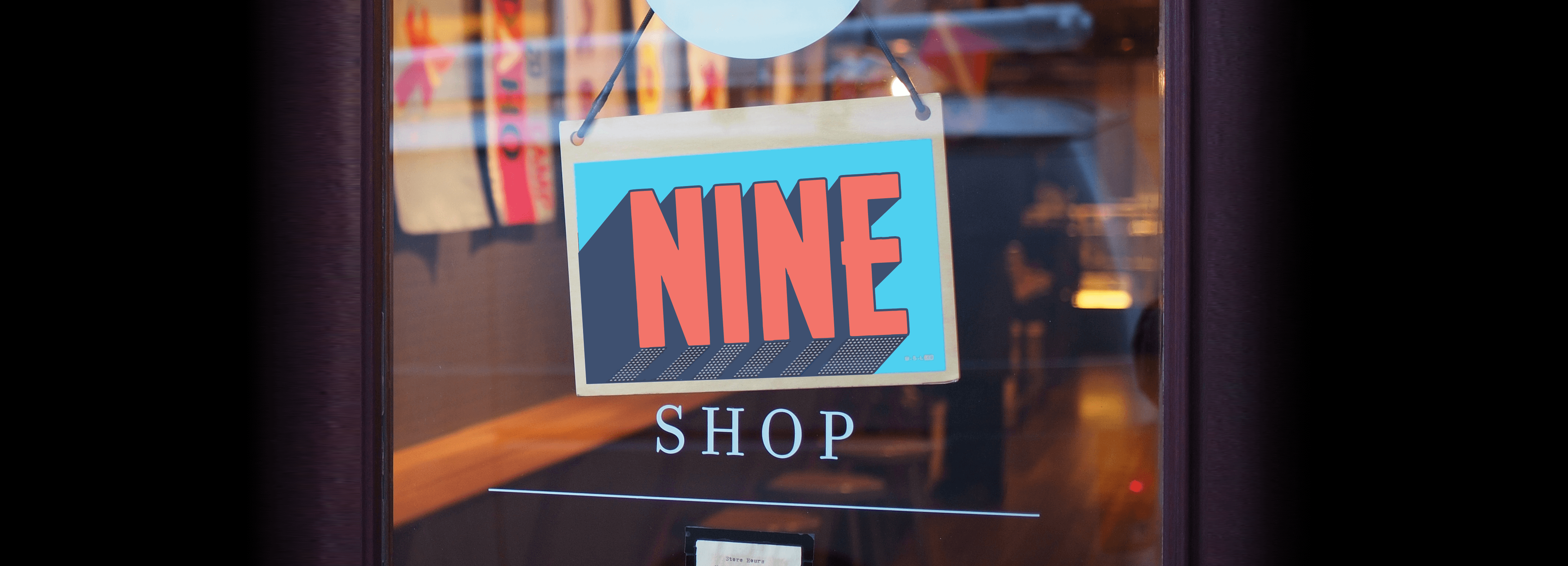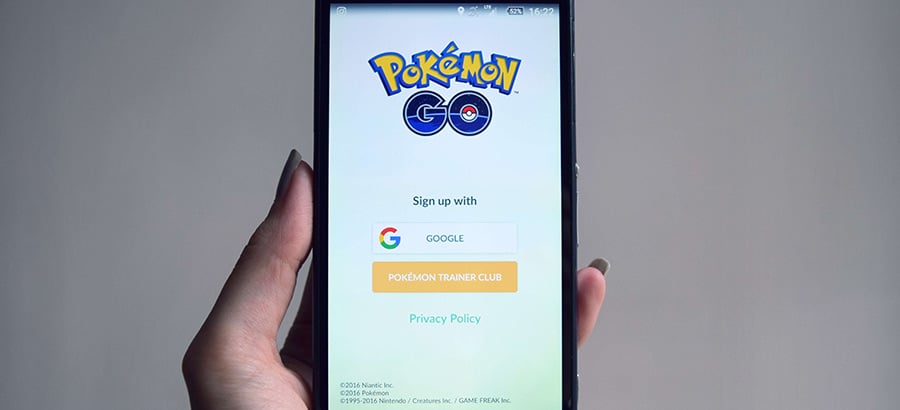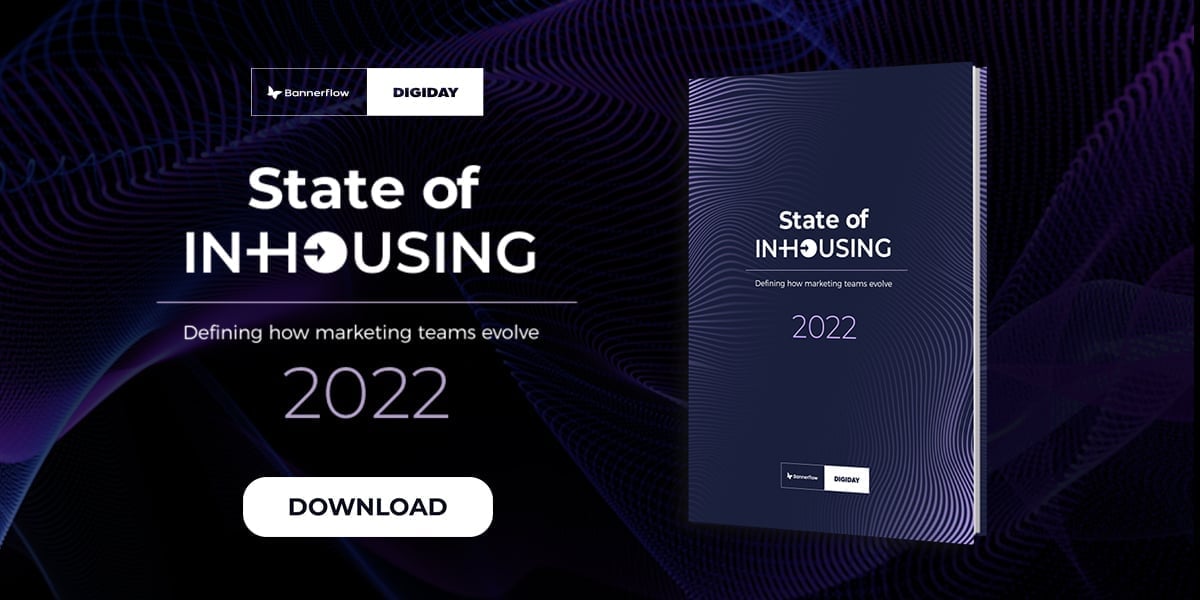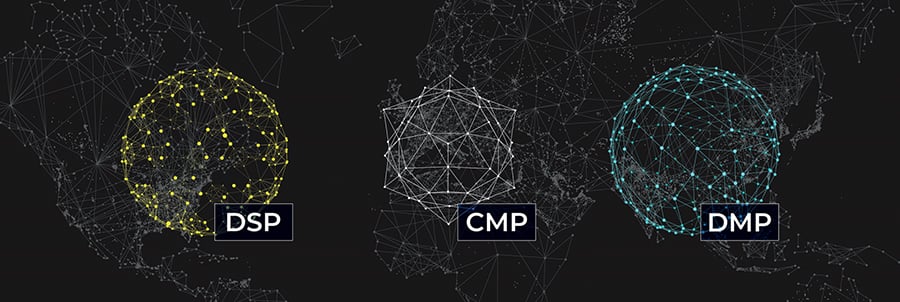Dynamic creative makes digital advertising worth it. It’s presenting the right message, to the right person, at the right time, without the fiction. It’s digital advertising finally catching up with the promises we’ve heard so many times over the years. It’s being able to do true personalisation across your display campaigns.
Combined with developments in data and targeting, dynamic creative campaigns are set to become the new norm. Indeed, building dynamic banner campaigns is painless, thanks to creative management platforms (CMPs). Applying data, using analytics and scaling campaigns is now well within the capabilities of all in-house marketing teams.
But what are the different types of dynamic creative campaign?
1. Geo-targeting campaigns
First up on our list of dynamic creative campaigns is geo-targeting. Like the name suggests, this type of campaign relies on using location touch points to serve viewers with specific advertising. The touch-point data could be simple as using an IP address or using a GPS location. The beauty of geo-targeting, combined with dynamic creative, is that it lets you drill down to a granular level.
For example, you can localise the content in your ads through familiar imagery, or copy specific to cities and regions. You can serve local promotions depending on where the viewer is too – right down to the district of a city. Which is particularly helpful if you have brick and mortar stores that you want to draw people to.
Combined with a CMP it’s possible to produce as many location-based ad variations as you need. All without the need to manually produce and code individual banners. Meaning that you can show products that are relevant to local tastes. Further, the more campaigns you run in different markets, the more data you will have to optimise future campaigns. Plus, if you use a CMP that offers translation services, producing variants for global locations is even easier.
2. Feed-based product campaigns
Next we have product campaigns that use data feeds. Primarily focused on e-commerce but just as relevant for other industries such as travel. Product focused dynamic creative campaigns serve viewers with selected products and offers, via live, or spreadsheet-based, data.
They target consumers who have browsed product pages, or have shown intent. Product campaigns retarget selected viewers, with specific products. Furthermore, these type of campaigns are particularly useful for abandoned cart promotions, and cross-selling.
What makes these campaigns notable is their relative ease to create and control via a CMP. All you need to do is connect a data feed to your master creative. This will then show the products and offers you want displayed across all sizes and variants of a banner campaign.
Plus, with features such as a burn pixel, you can make sure you only show viewers products they’re interested in and not ones they’ve already purchased. Forget to do this, and you’ll spam the viewer, as well as fail at retargeting.
3. Sequential storytelling across ads
Sequential storytelling is simple in its execution. It’s the concept of showing ads to a specific audience, in a particular order, using a defined frequency, and structured narrative. Additionally, it relies on users self-selecting themselves into interaction with a brand. This tracking data is then used by brands to develop focused campaigns. It’s targeted storytelling basically.
The narrative could be a clothing store promoting next season’s fashion. Or an airline introducing a new destination to selected customers.
Storytelling has many advantages over traditional targeting techniques. A video or banner ad that is part of a compelling storyline, will likely have better performance metrics than one that does not. It’s easy to put in place too. Especially, if you have access to 1st party data, and dynamic creative options.
Furthermore, sequential storytelling allows marketers to experiment. Designing unique formats that work in combination with other channels, such as social. This personalised approach helps to increase brand awareness even more.
4. Demographic targeting
Another good use for dynamic creative is demographic campaigns. They allow brands to use the first person data they hold, or purchased third person data, to create optimised ads. Dynamic creative makes it easy to plan, and render individual messages. It means you can take the same product and offer, and produce display advertising that targets an individual demographic.
For example, one demographic group may have very different reasons for visiting a destination compared to another. A weekend trip to Amsterdam being an obvious example. It is doubtful that images of museums and canals will inspire millennials. While, copy that mentions carnivals, and exotic forms of entertainment, may put-off certain groups. Dynamic creative helps to serve the best ad, to the correct demographic.
One more thing, with a CMP it’s possible to make your demographic campaigns even more effective. And that’s by producing landing page variants that conform to viewers’ expectations. Using a CMP means you can build and scale as many landing pages you need.
Do this and you can also optimise landing pages that are connected to the demographics you’re targeting. Plus, like your dynamic creatives, you can use analytics to enhance and a/b test.
5. Behavioural prospecting
Here’s another type of campaign that’s worth considering: behavioural prospecting. It focuses on targeting users, via dynamic creatives, who are either researching or interested in specific things.
These campaigns are driven by pre-analysed data sets, based on both 1st party and 3rd party data. Brands then use this data to identify particular customers to focus on.
Again, like many of the dynamic creative campaigns featured in this blog, the need to produce variants of banner is essential. This process is, of course, streamlined through the use of a CMP. Better yet use a CMP for behavioural prospecting, and copy, imagery, in fact any object in a banner, can be served direct into a master banner, via a data feed. This reduces the need to create hundreds of banners. Meaning you can serve live odds to football fans, and the latest currencies to travellers.
6. Contextual campaigns
This is all about prospecting a webpage’s content and serving the best ad for that page. This type of campaign is particularly good for advertisers concerned with brand safety. Banner misalignment may occasionally be humorous but it’s a waste of budget and highly inappropriate for brands. Therefore, contextual campaigns are an excellent way of making every penny count and remaining in control.
This type of dynamic campaign tailors an ad to a page’s content, in partnership with publishers and DSPs. It means that if a viewer is reading about Liverpool FC, furniture, or the latest Autumnal fashion, they will see related banners.
What’s good to know is that some creative management platforms, such as Bannerflow, offer this feature. Automatically scanning a page for key words, retrieving extra info, and then selecting the most appropriate banner variant. All you have to do is place a HTML5 component, or widget, in your master dynamic creative.
7. Dynamic creatives that mirror the user journey
Imagine targeting viewers at each stage of their interaction with your brand? Sounds like a good idea, correct? User-journey campaigns show viewers dynamic creatives tailored to each layer of the sales funnel. From top to bottom, from awareness to retention. You only show viewers ad variants with the message that is right for them.
To enable user-journey campaigns you need to integrate your data management platform (DMP) into your dynamic creative. Again, the simplest way to do this is to use a creative management platform. From one banner template, you can supply dynamic creatives relevant to where the user is in the sales funnel. Re-engaging users after they’ve left your site, with only the products or offers they’ve expressed an interest in.
8. Use dynamic creative optimisation (DCO) technologies
Dynamic creative optimisation (DCO) is something more brands need to be doing. It’s not another piece of ad-tech jargon. It is the next logical step for digital advertisers. The missing piece of the puzzle. DCO combines display ad creation with analytics: selecting, and optimising dynamic creatives. (You can read more on DCO in-depth – what it is and how to set-it up – here)
Now here’s the killer piece of information. All the campaigns mentioned so far – every single one – is ready for DCO. It’s all about using the data that you have for targeting, with analytics, to serve effective creatives. Say, for example, Sweden are beating Germany in football, an iGaming ad will not only show the best odds via a data feed but the most suitable variant copy for its audience. Perhaps a Sweden-focused comment on the match. Or a positive statistic about Germany’s ability to come from behind. DCO is all about making display advertising even more relevant to viewers.
What’s more, if you use a creative management platform, applying DCO to your campaigns is easy. From one single banner template, you can produce all the variations you need. From the colour of a button, to images, to the copy you use: it’s all about using cold, hard data, to enhance designs. With features such as heatmaps you can a/b test and make informed design decisions too.
In fact, CMPs make it easy to use dynamic creative optimisation. Campaigns optimised through analytics, that are scheduled to hit the right viewers, with the right context, at the right time – in real-time.
9. DCO that uses artificial intelligence
One final thing to consider: dynamic creative optimisation with artificial intelligence (AI).
This is DCO that uses an algorithm to select specific creative elements on the fly. Using selected data sources, it picks the best combination of creative to put in front of a viewer. It takes different types of dynamic creative campaign and automatically fuses them together. Meaning you can build campaigns that use demographic data, geo-targeting, and contextual data to make the ultimate dynamic creative campaign.
What’s more you can add as many data sources as you want. From weather reports to traffic conditions, the choice is yours. There’s no limit to what you can do. It takes display optimisation to the next level. It’s also another thing that CMPs make happen; whether, in-built, or in combination with other solutions such as DoubleClick Studio (now Campaign Manager and Studio). It’s another step towards that holy grail of digital marketing: personalised advertising.
Dynamic creative: take-aways
Many businesses are already comfortable using dynamic creative for the types of campaigns described in this article. Some may be experimenting, while others are applying dynamic creative optimisation to its full potential. The only limit is ambition.
What these business all have in common is that they will have realised that mass-personalisation of display advertising isn’t feasible via the old production model. Nor is full control and transparency. It’s impossible to manually produce so many sizes and variants at scale and keep costs low!
That’s where a creative management platform comes into play. It’s the only ad-tech out there that lets you create the amount of advertising required to make dynamic creative a reality. It also let’s you work in-house, have full control, and be more efficient across all areas of campaign production.
Finally, here at Bannerflow we offer the ability to apply a whole range of dynamic creative solutions through our own CMP. Not only that but we’ll help you embrace DCO across multiple markets too. If you’d like to know how we can help produce the dynamic creative campaigns your brand needs, then get in touch.







